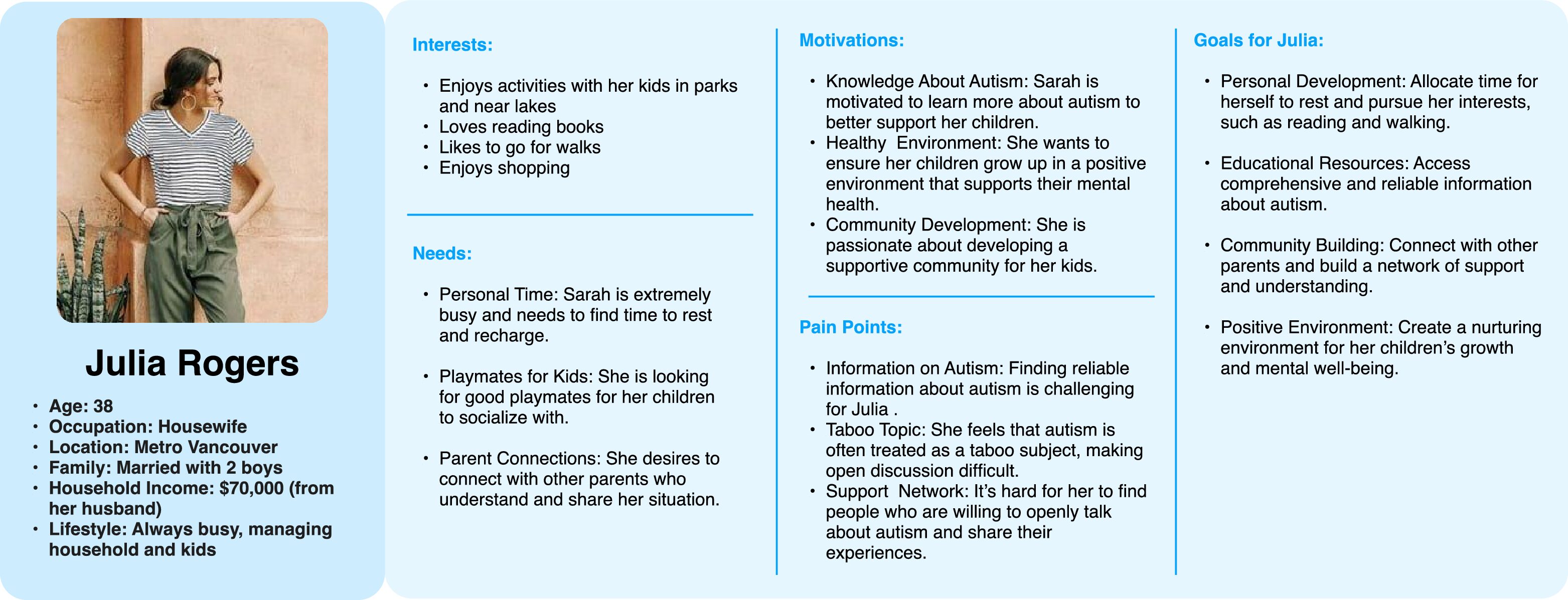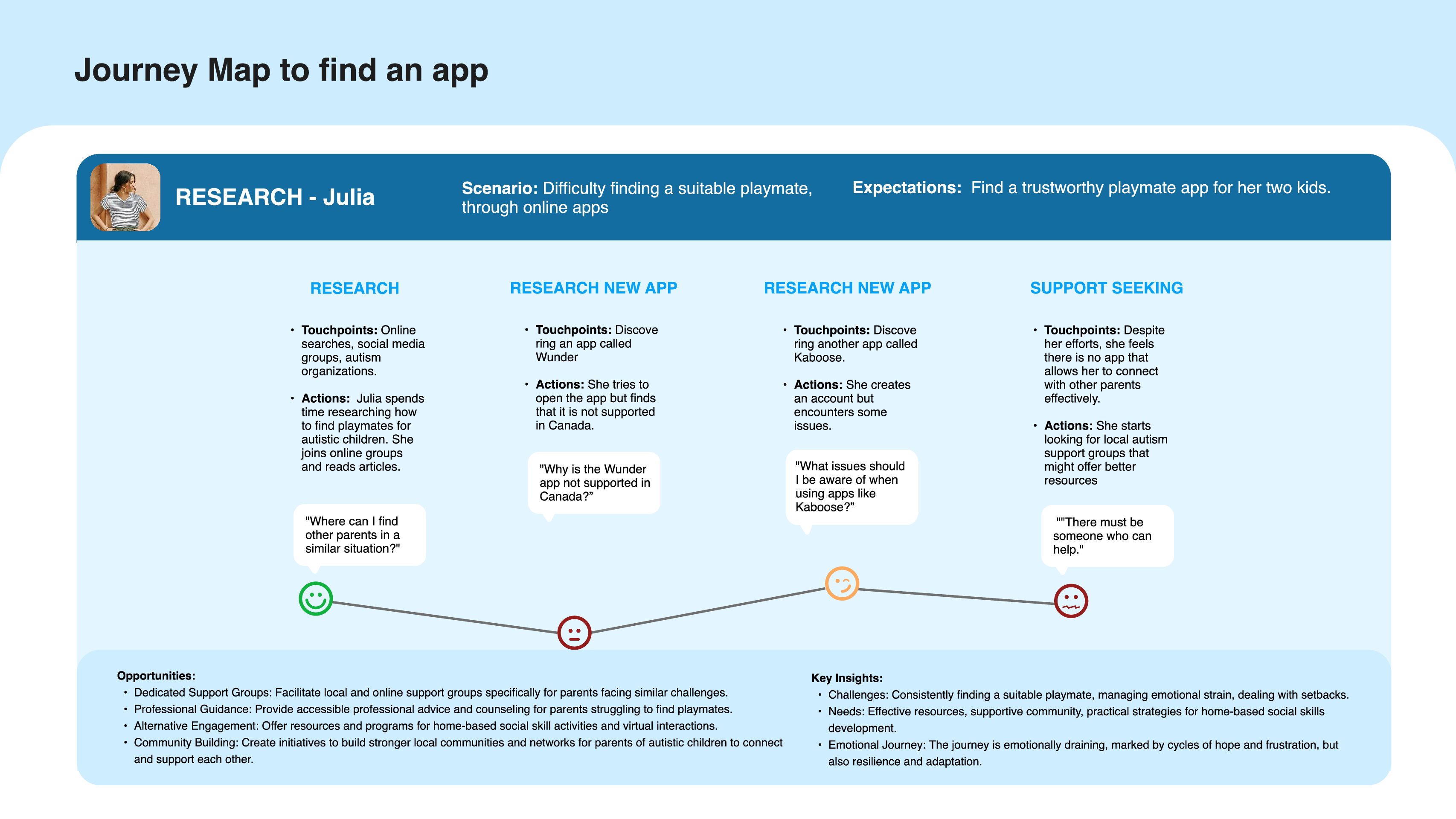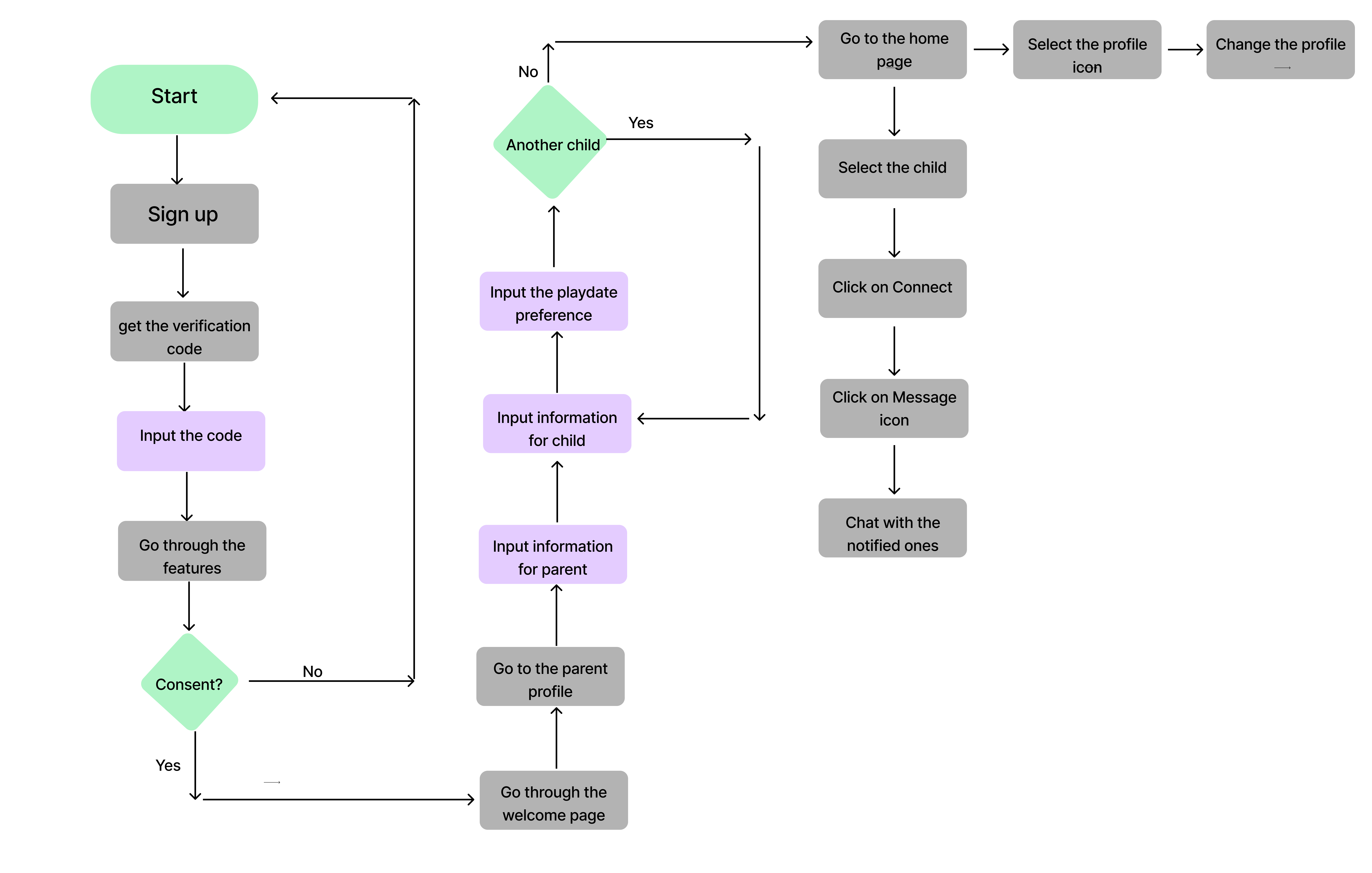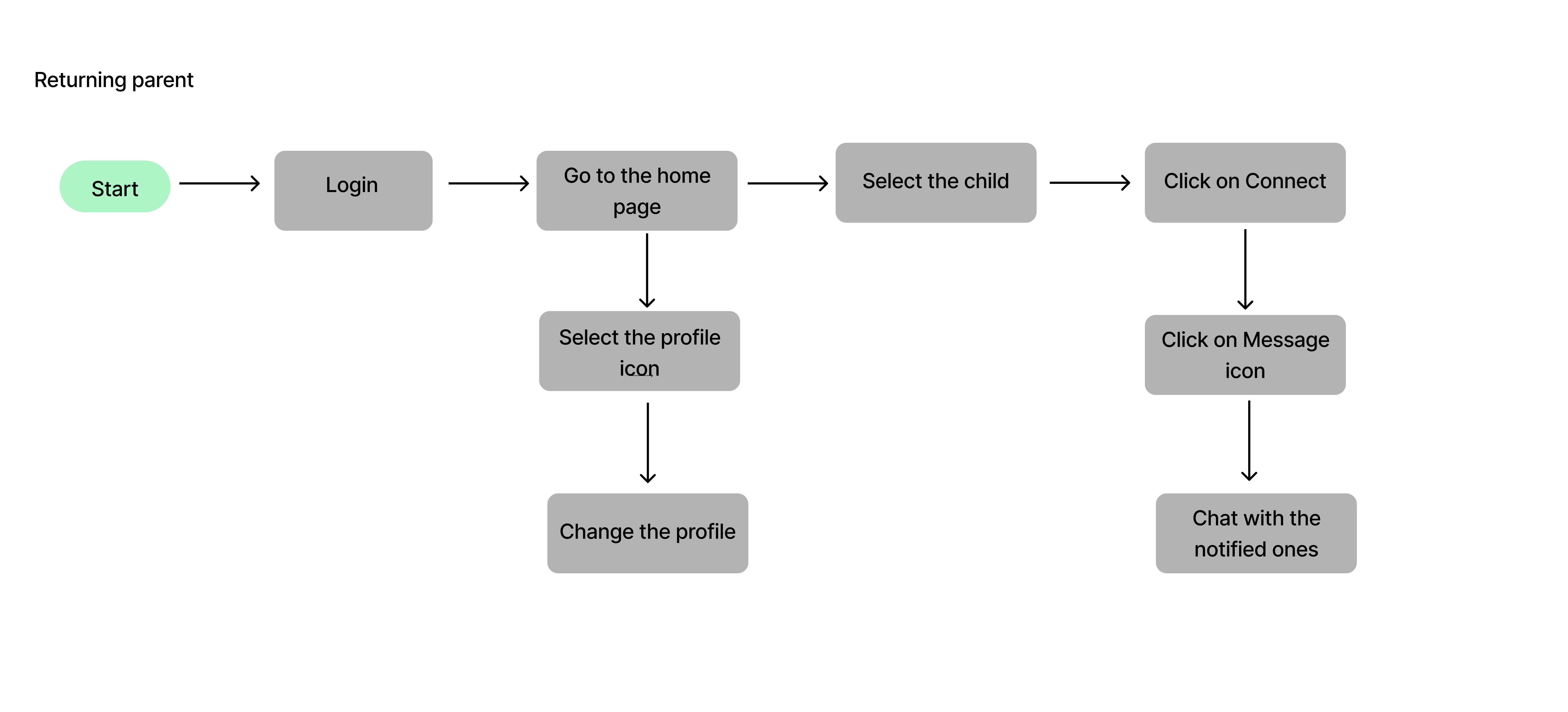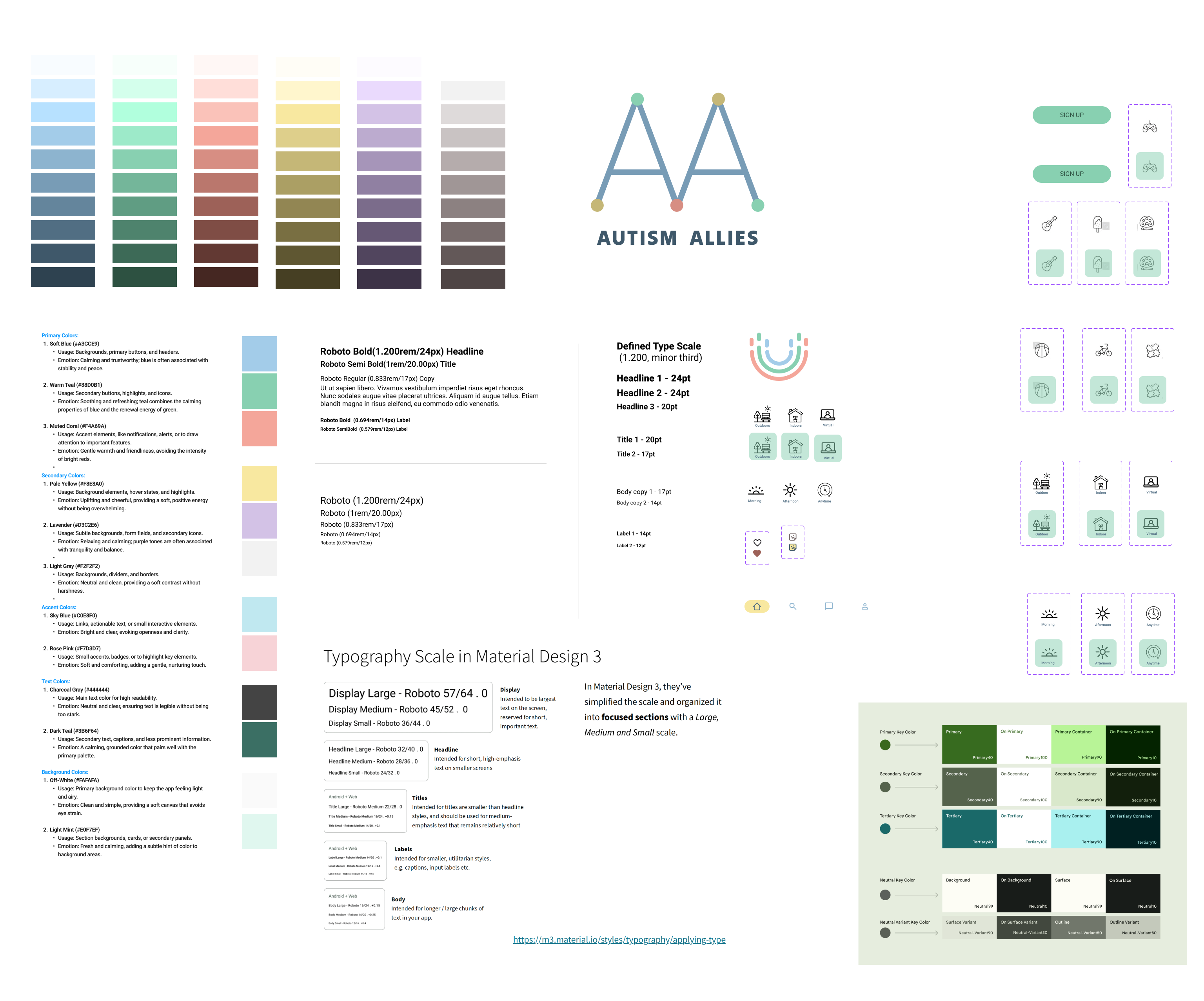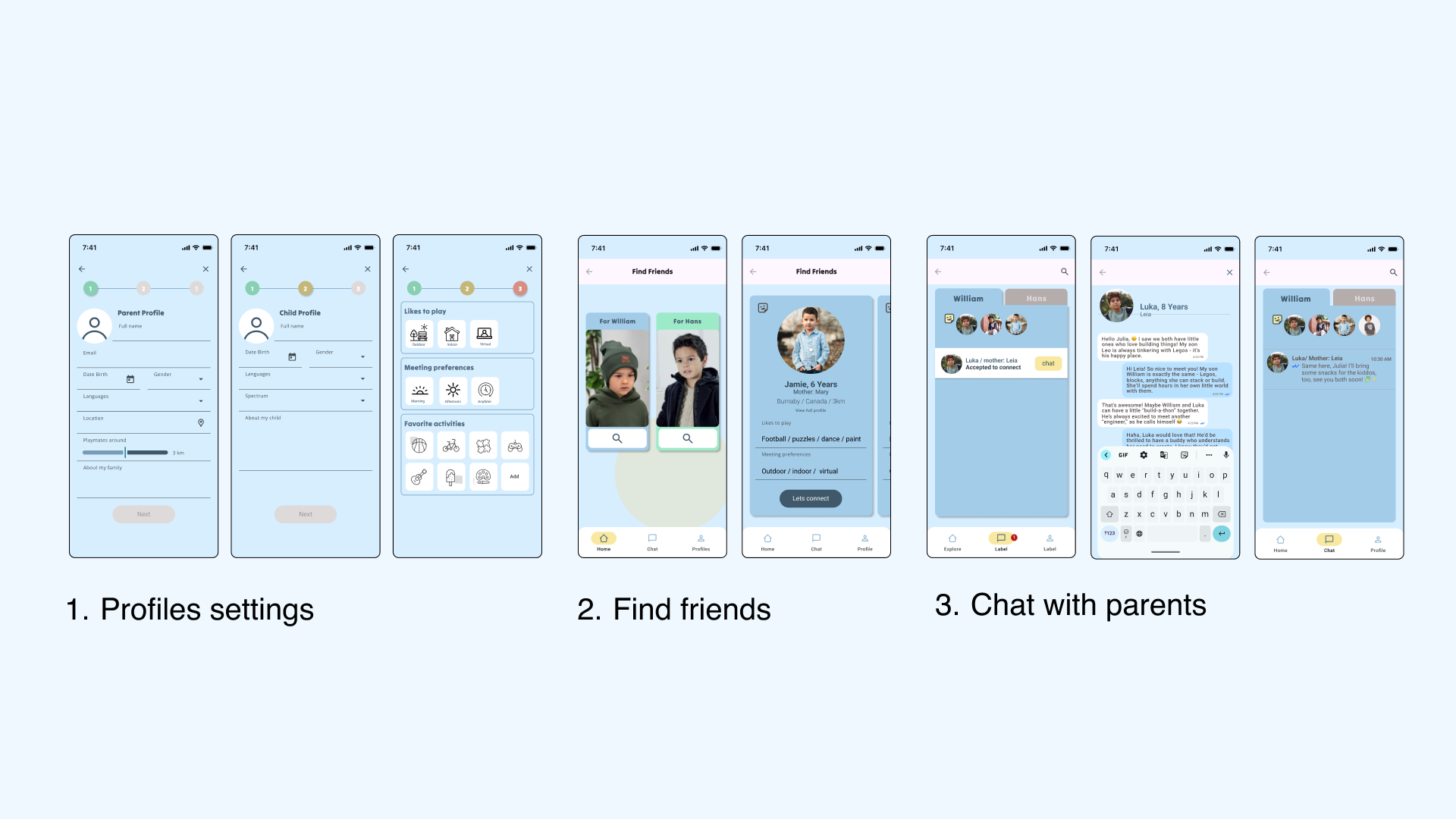Autism Allies is an app designed to help children with autism build meaningful friendships by connecting families with shared interests and needs.
This project is inspired by my seven year old autistic son who has challenges making like-minded friends and building a healthy social network.
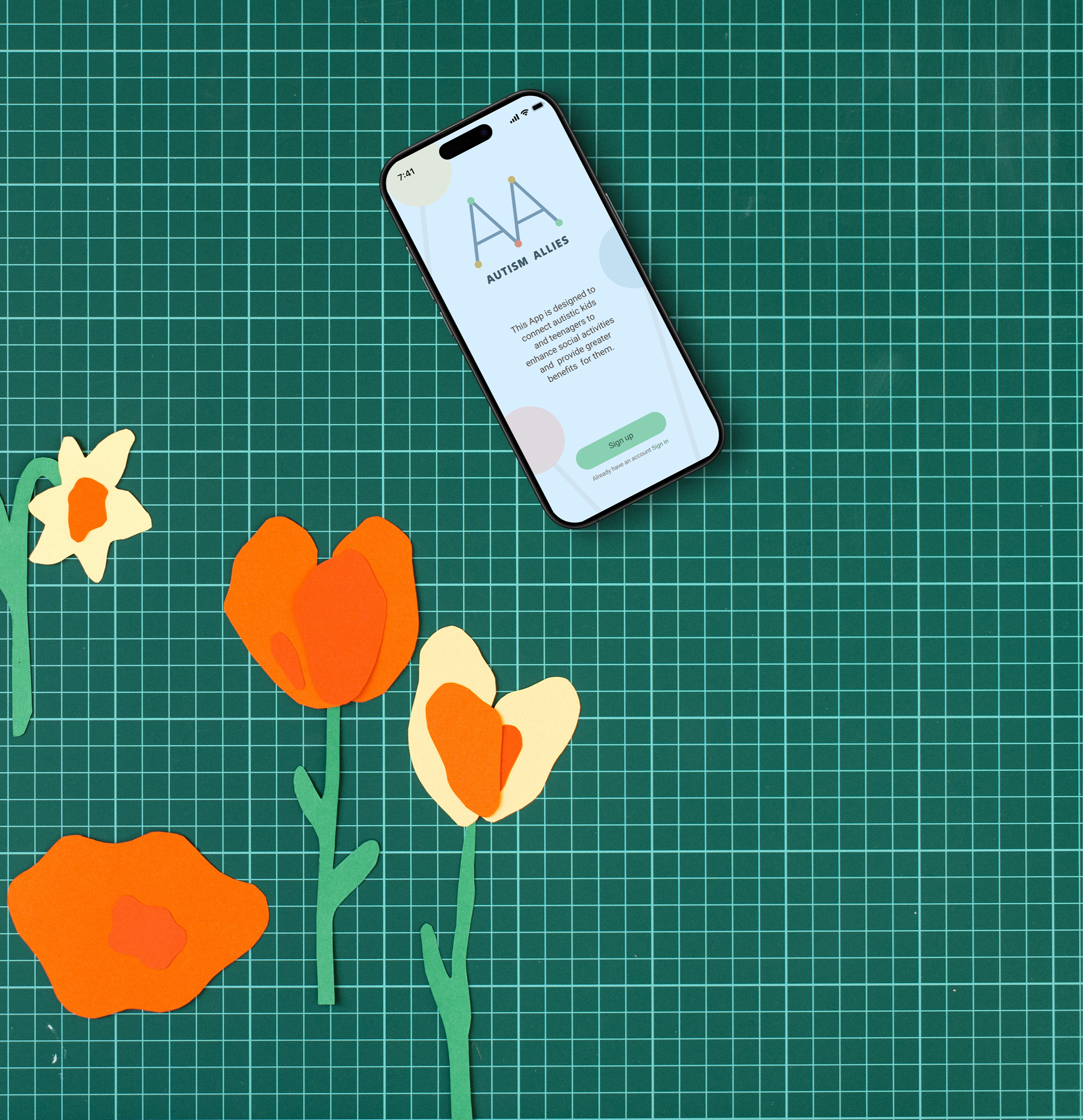
The Kick-Off
Project Duration: 7 weeks
Team members: Team of two designers with a Design Lead providing guidance
My roles: UX/UI/UR Designer
Empathize
Problem Statement
Children with autism often encounter unique challenges in forming friendships due to differences in social and communication skills.
Secondary Research
Social challenges faced by children with Autism.
Parents, teachers, and caregivers must all work together to help a child with autism become regular with his/her ability to socialize.
On a social level, a child with autism should learn to:
- Play with others (sharing, taking turns, pretend play)
- Talk to others
- Manage emotions
- Solve problems
Facts about autism:
According to the 2019 Canadian Health Survey on Children and Youth (CHSCY), 1 in 50, or 2.0%, of Canadian children and youth aged 1 to 17 years were diagnosed with Autism Spectrum Disorder (ASD). The highest prevalence of ASD was observed among children aged 5 to 11 years, with 1 in 40, or 2.5% (ranging from 2.2% to 2.8%), being diagnosed. Furthermore, males were diagnosed with ASD approximately four times more frequently than females, with a prevalence of 1 in 32 males, or 3.1% (ranging from 2.8% to 3.4%).
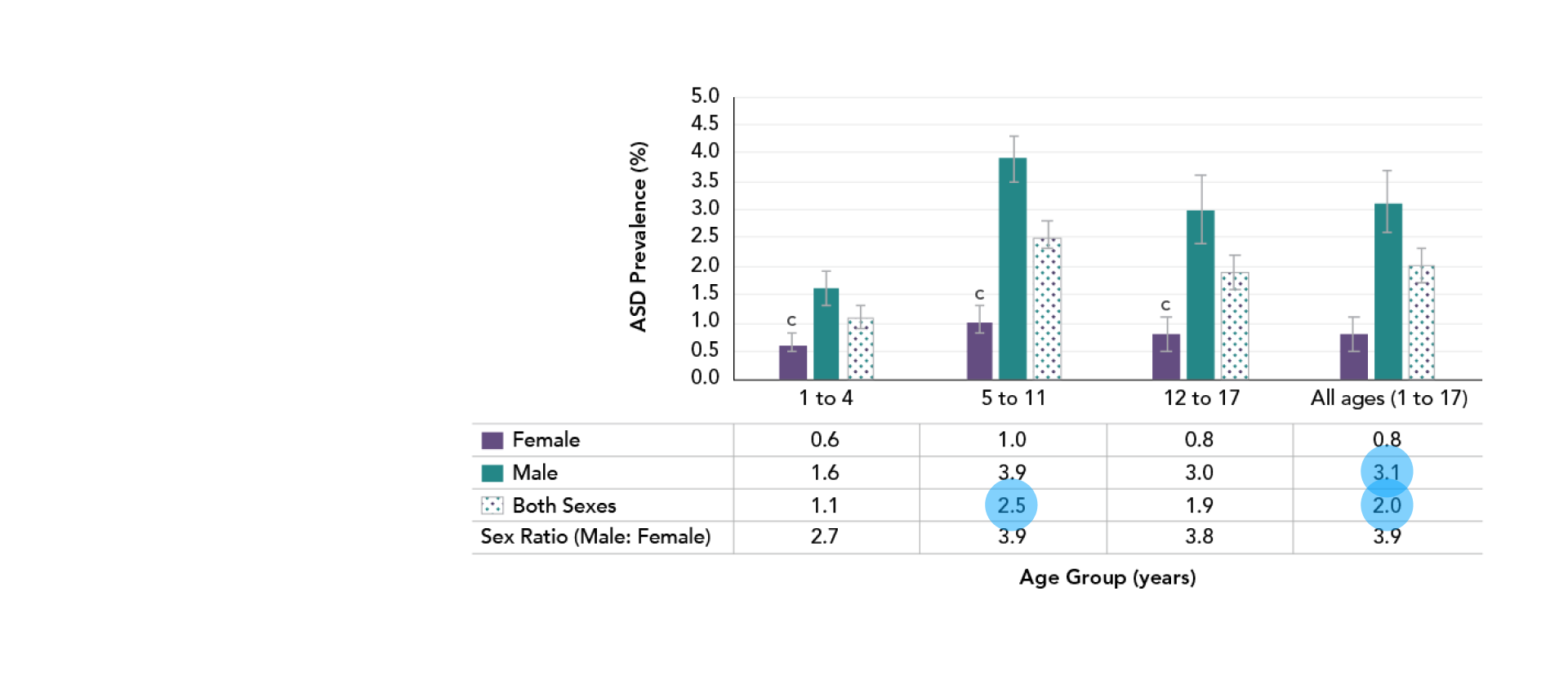
More facts...
The chart illustrates the significant gap in functional skills between children with and without ASD. Among children aged 1 to 5 years, 25% of those with ASD have difficulty playing, compared to just 0.3% of children without ASD. This highlights the substantial impact of ASD on early childhood development
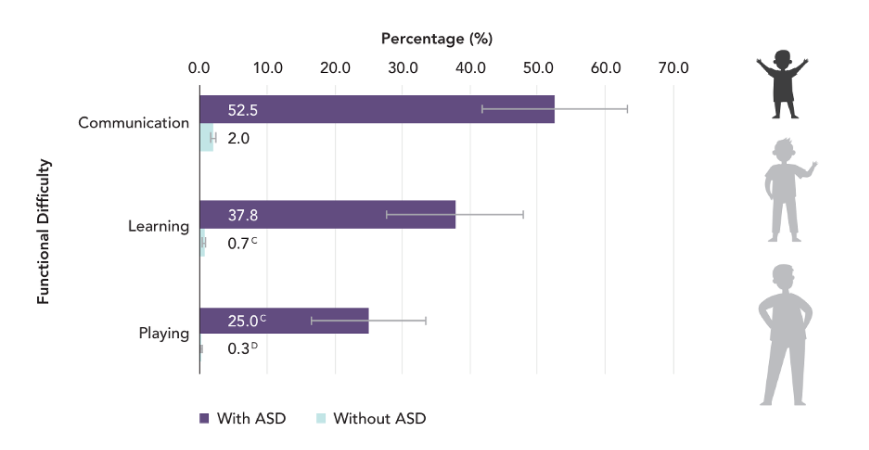
Nearly three-quarters of children and youth with ASD experience challenges in at least one area of functional difficulty.
Finally,
For children aged 12 to 17 years, the differences in functional difficulties between those with and without ASD remain significant. Difficulty making friends affects 48.2% of children with ASD, compared to just 2.8% of children without ASD. Additionally, the challenges with social acceptance are notable, with 35.8% of children with ASD experiencing difficulties, compared to only 3.1% of their peers without ASD
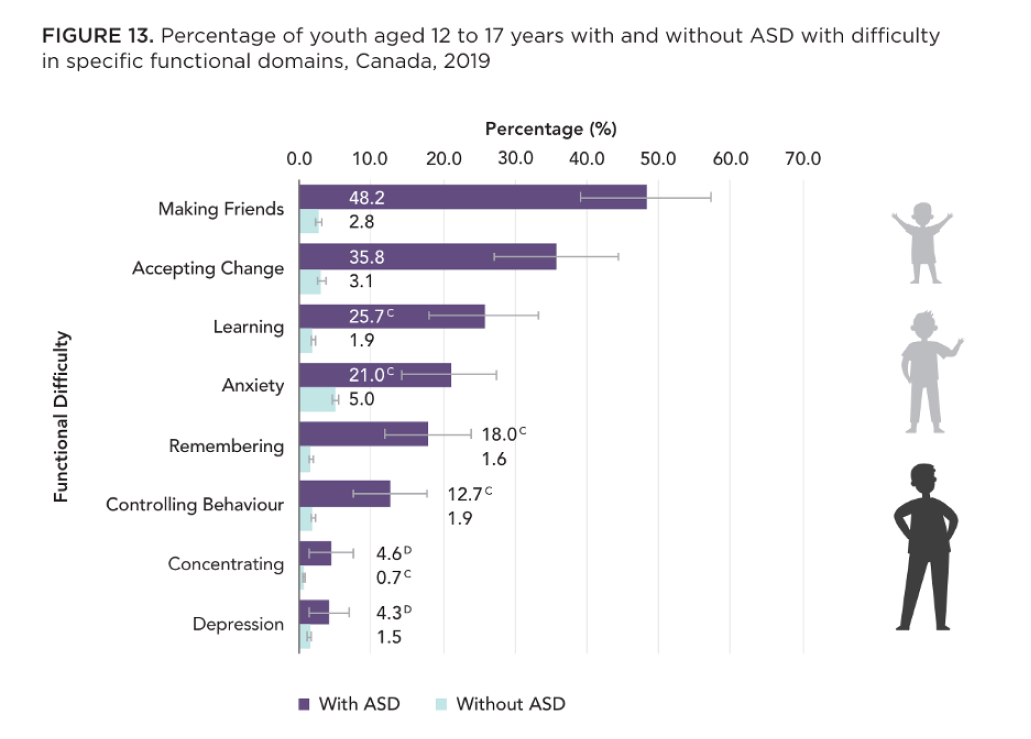
For the better results, socializing should begin at an early age to achieve the best results.
Primary Research
Put myself In parents shoes
As a parent of an autistic child, I’ve faced many challenges since my son was diagnosed. I found it comforting to hear similar thoughts and experiences from other parents navigating similar situations. I conducted 15-minute interviews with five families with autistic children, and here are the insights:
Socialization Difficulties:
Autistic children struggle to socialize, which can lead to isolation. Parents often report that their children do not interact well with peers or participate in group activities.
Communication Barriers:
Whether verbal, semi-verbal, or non-verbal, communication issues are a significant hurdle. Children may have trouble expressing needs, understanding instructions, or engaging in reciprocal conversations.
Emotional and Mental Health:
Parents frequently experience stress, anxiety, and depression upon receiving the diagnosis and throughout their journey. Support networks are crucial but often lacking.
Lack of Knowledge and Resources:
Many parents initially lack understanding about autism and struggle to find adequate resources and support systems, including educational materials and community programs.
80%
Of the parents can't find a playmate for their child easily.
Haleh, an interviewiee: It would be beneficial to add a playdate feature and activities with other children to help enhance social skills.
Define
Persona and Journey map
Finding the target user
The target user group was selected to ensure the app meets the specific needs and preferences of autistic children and their families.
My persona, Julia, is a mother of two autistic children, William and Hans. Both are verbal and high-functioning. Julia is constantly busy caring for them, as they spend most of their time at home and struggle with socializing. Let’s explore her journey in finding playmates for them in more detail next.

Feeling deeply in my heart how hopeless this situation can be, we began formulating our “How might we” question.
How might we encourage the parents to help the autistic kids to find their own community?
Competitive analysis
Developing an app focused on facilitating safe and meaningful playdate opportunities
Kaboos: The app is primarily designed for adult autistic users rather than children. The caregiver section’s sign-in process is overly complicated and mistakenly focuses on finding a match for the caregiver instead of addressing the intended purpose.
Wunder: Not supported in Canada.
Now, let’s explore what happens when Julia searches for an app.
Ideate
User flow
Step-by-step visual representation of the path
Now is the time to focus on finding a solution for my son’s challenges, as well as for our persona, Julia, and her two kids. We designed a User flow for Julia, detailing her journey from downloading the app to completing the onboarding process and beginning her search for suitable matches for her children.
For returning parents we prepared another user flow:
Wire-frame
Next Step
Wireframing the solution
After creating the user flow, sketches for the playmate app were developed. With no strong competitor apps available, MyPlaydateApp.com was used as a reference for designing the onboarding process.
Visual Suggestions
Digital identity
A path to Mid-Fidelity design
Following the completion of the initial wireframe design, the transition was made to mid-fidelity designs to enhance the effectiveness of user testing. A specialized design procedure was implemented to ensure the app met the needs of autistic users.
Designing for the users on the autistic spectrum
ukhomeoffice.github.io/accessibility-posters/posters/accessibility-posters.pdf
Do
- Use simple colors
- Write in plain language
- Use simple sentences and bullets
- Make button descriptive
- Build simple and consistent layout
Don't
- Use bright contrasting colors
- Use figures of speech and idioms
- Create a wall of text
- Make buttons vague and unpredictable
- Build complex and cluttered layouts
The design exploration
We developed the branding and logo for our autism app based on the core ideas of fostering connection, promoting inclusivity, and encouraging engagement. The design reflects these values through its thoughtful use of shapes, colors, and typography to create a welcoming and supportive identity for users.
Prototype
A mid-fidelity prototype was created to demonstrate the concept.
https://www.figma.com/design/UBtSfSZgu7o4pB4Ne2oRWI/Autism?node-id=9-3461&t=n2ROa7CKg50qH9cE-1
While designing the prototype, we focused on three key sections and we did the user test based on it:
User Test
Testing with a Mom
Exploring the app
To test the app, I worked with a mom who has an autistic son and provided valuable insights for the app’s development. I guided her through signing up for the app, creating a profile for herself and her two imaginary autistic children, searching for a friend, and starting a chat with the friend’s parent.
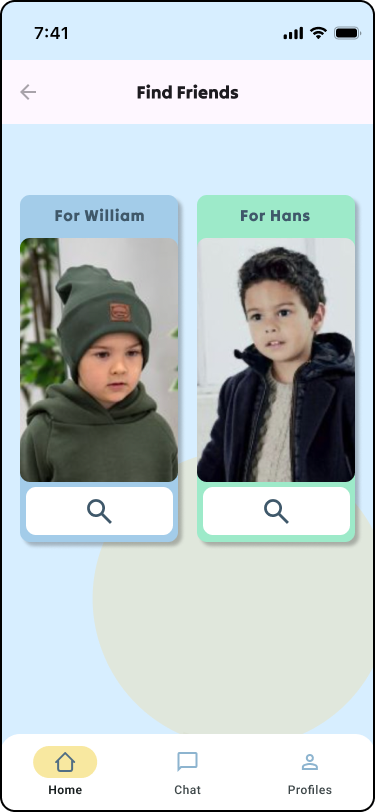
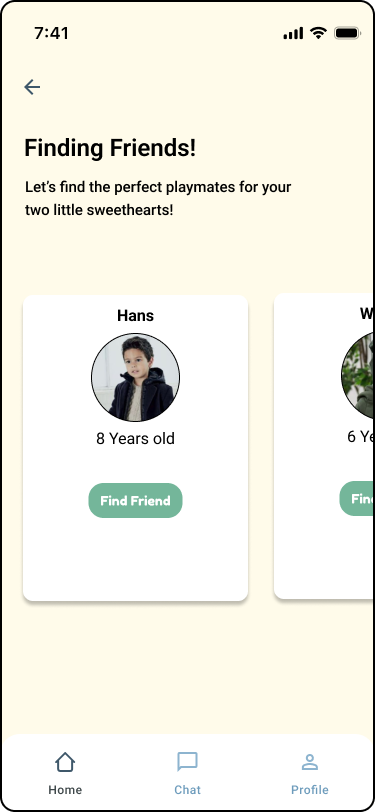
Navigation Confusion: The main struggle was that the user was unsure where to click on the page with William and Hans. The page was unclear, leading her to click randomly to see what would happen.
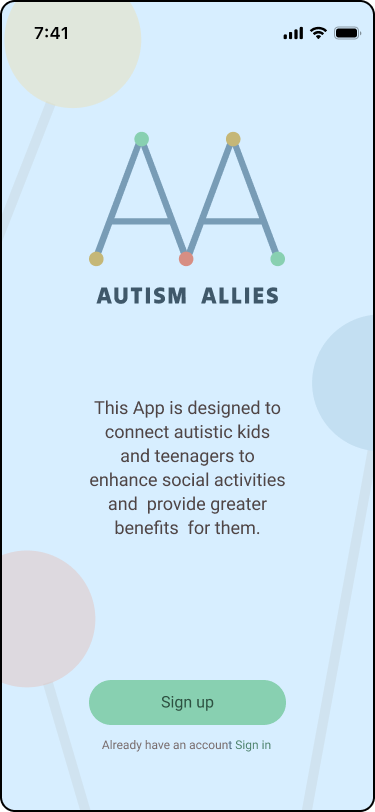
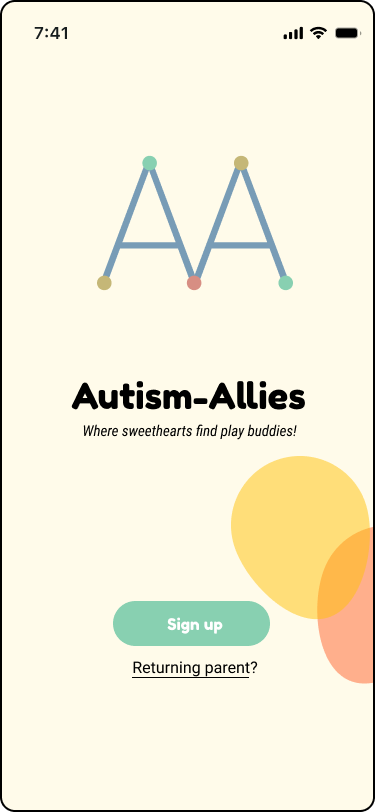
Color Scheme: The blue color closely resembles the selected color, which may lead to confusion. Consider using more distinct colors to enhance visibility and user experience.
Solution: The background color was updated to a warmer, more joyful tone to align with the app’s purpose of helping kids find playmates. While the app is primarily used by parents, the new color palette creates a welcoming atmosphere for both parents and children. Additionally, the revised color scheme minimizes confusion by differentiating it more clearly from the “selected” color used in the interface.
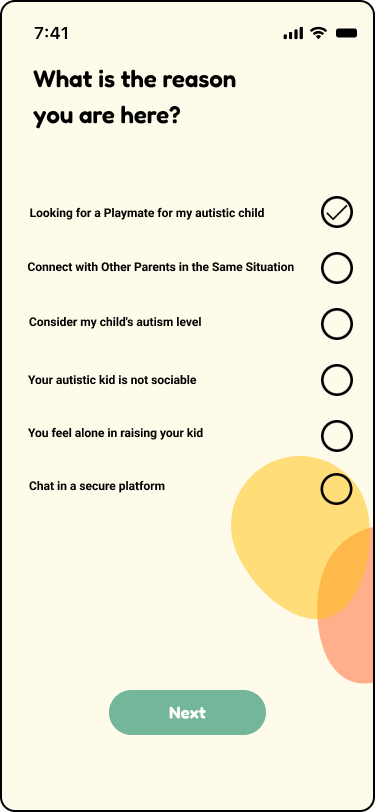
App Features: The app’s features are not adequately introduced to users, leading to confusion when they encounter them during navigation.
Solution: A new introductory frame was added to the app, providing users with a clear and concise walkthrough of its features. This frame uses a combination of brief descriptions, and interactive cues to familiarize users with the app’s functionality before they begin using it. By offering a guided introduction, users can better understand how to navigate the app, reducing confusion and enhancing their overall experience.
Other insight
A suggestion for future step
Language Options: The user expressed a desire for the app to support multiple language options, enabling her to connect with families who speak the same language. For instance, she emphasized the importance of including Farsi to make it easier to communicate and form meaningful connections with other Farsi-speaking families. This feature could enhance the app’s inclusivity and help users feel more comfortable and understood in their interactions.
Iteration and redesign
New prototype
A new prototype was design to benefit the users better:
https://www.figma.com/design/yOVocipUiZ3U7wqE7mvK5e/Untitled?node-id=1-3621&t=wXu0LxbjtJLM1mOr-1
Future options
Adding a feature for teenagers to connect in the app allows them to build friendships, share experiences, and develop social skills in a safe environment. This feature can include chat options, activity suggestions, and matching based on shared interests, helping teens feel less isolated and more supporte
More projects:

Brandmegaphone is a digital marketing agency that specializes in creating impactful advertising campaigns for businesses.

Piggy Bank helps young adults who have little disposable income and lack the confidence and knowledge to start investing.
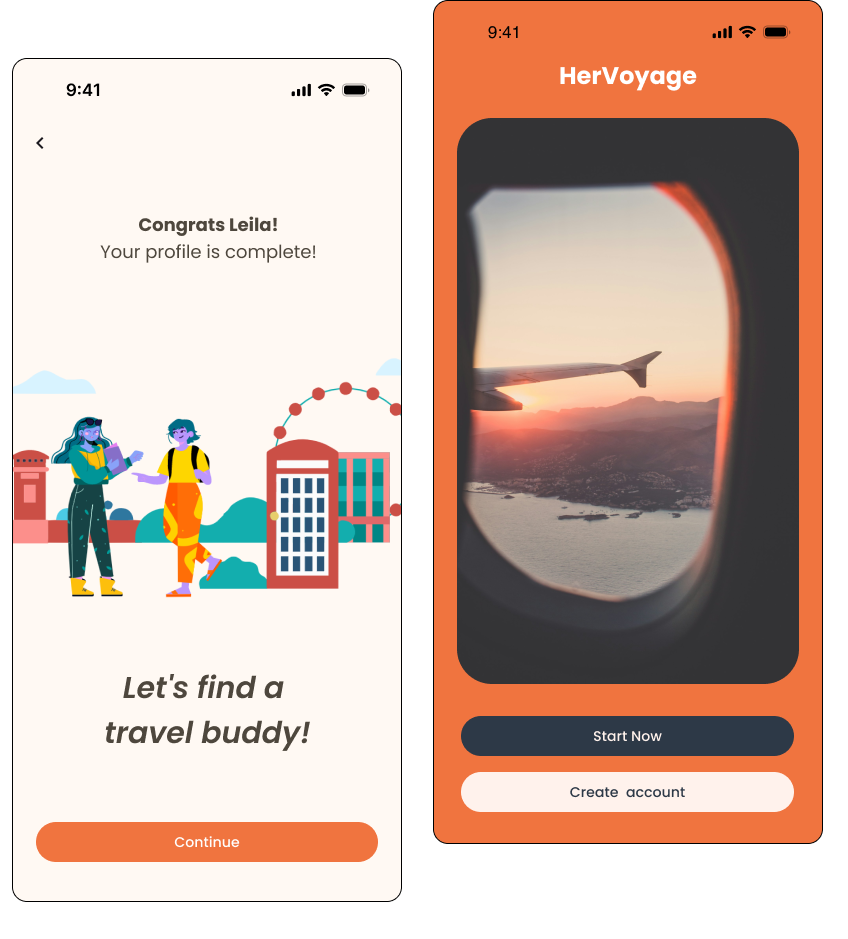
Her Voyage helps the solo women traveller find companions for their trip.
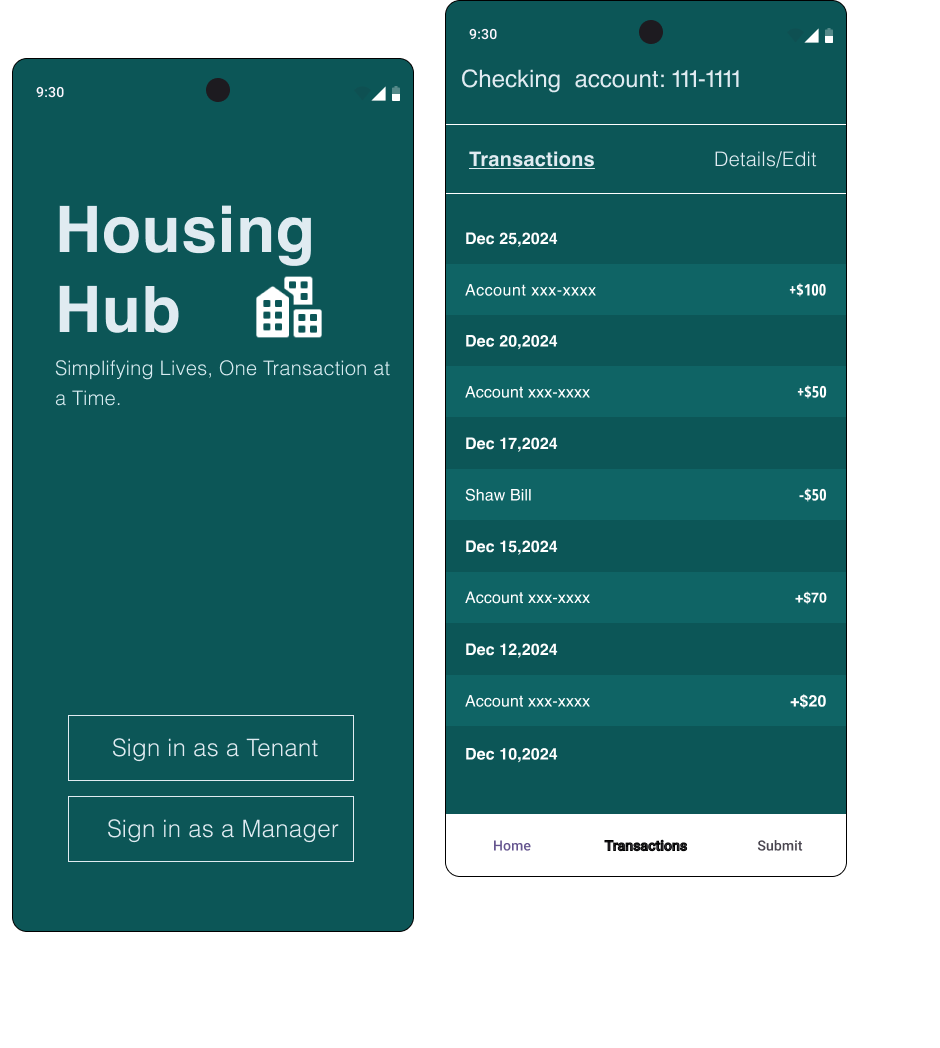
The BC Housing Streamline Project aims to improve the housing application and management process for both tenants and BC Housing staff

